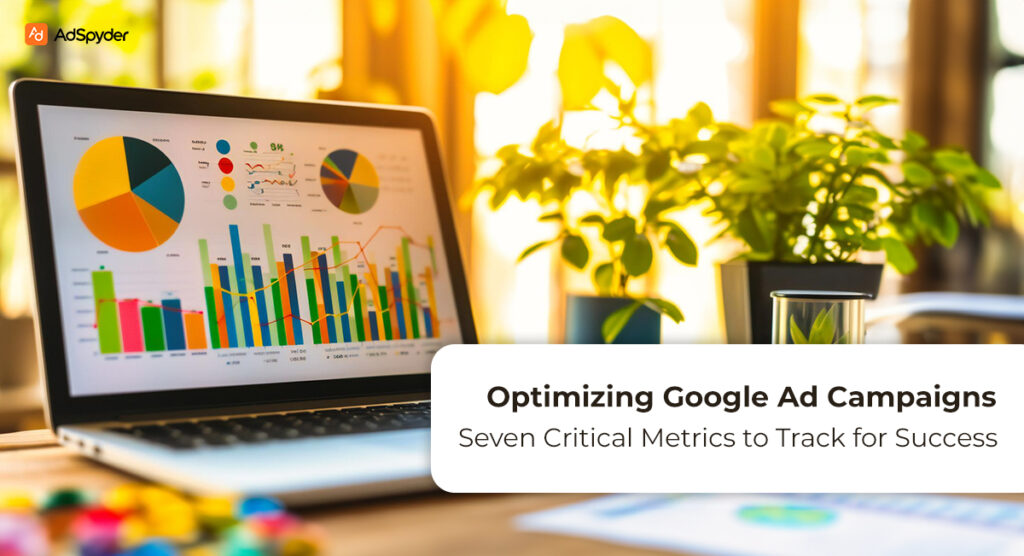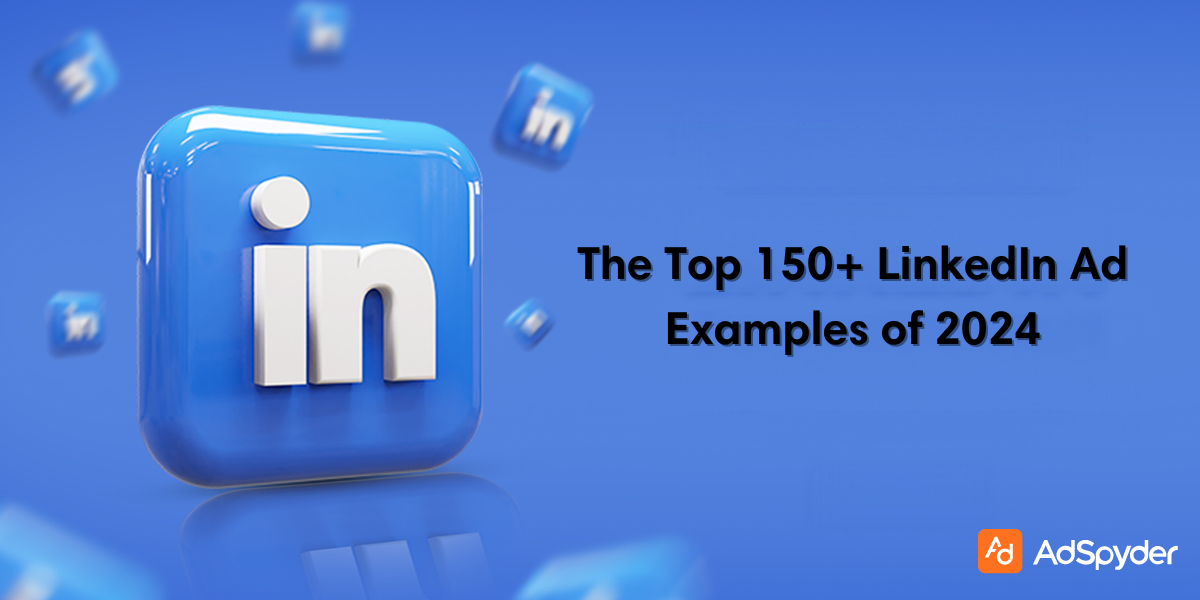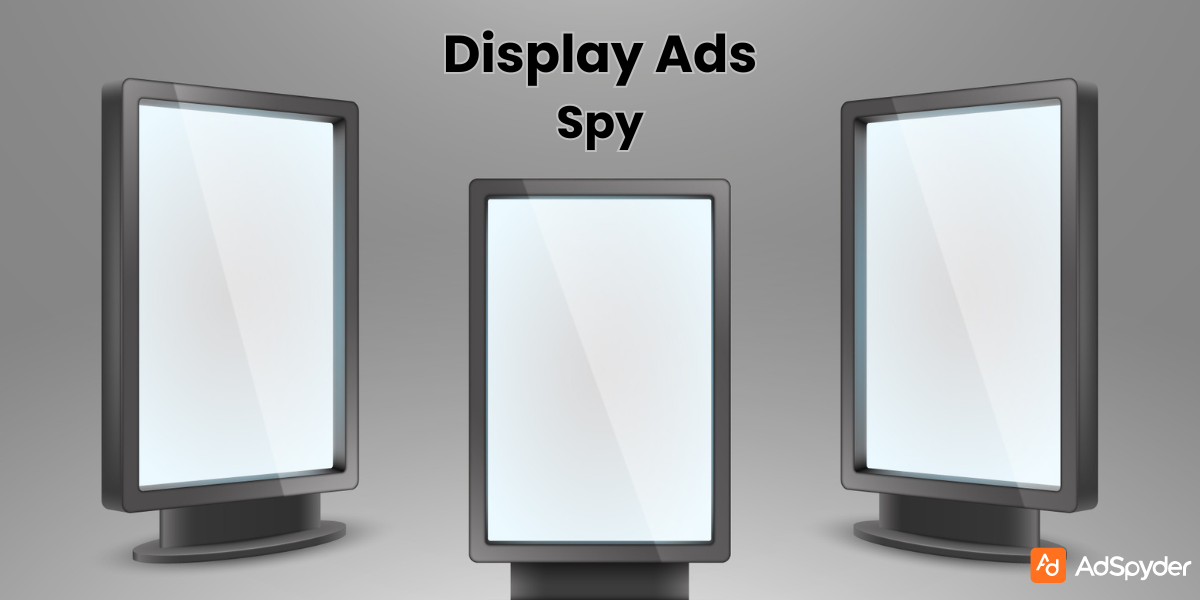Optimising Google Ad Campaigns is like solving a puzzle. Each piece, or metric, fits together to create a clear picture of success. Knowing which pieces matter most can make the difference. In digital marketing, these metrics are your best tools for measuring how well your ads do online. They help you understand what works and what doesn’t in connecting with customers through Google search and its display networks.
This post explores seven key metrics crucial for any advertiser on Google’s platform: Click-Through Rate (CTR), Cost Per Acquisition (CPA), Return on Ad Spend (ROAS), Quality Score, Impression Share, Conversion Rates, and Key Performance Indicators (KPIs). These metrics guide you in making smarter decisions that drive better results. For example, did you know about 65% of advertisers see significant benefits by routinely tracking their CTR?
Understanding Google Ad Metrics: An Overview

Google Ad Metrics act like a GPS for your online ad campaigns. They guide you, showing which ads grab attention and which miss the mark.
The Role of Metrics in Google Ads Management
- Metrics in Google Ads management serve as crucial indicators of campaign performance. They help digital marketers understand how well their online advertisements are doing.
- By tracking metrics like click-through rates, cost per acquisition, and return on ad spend, managers can see which ads drive engagement and sales.
- This information guides decisions on where to invest advertising budget for the best results.
- Analyzing Google Ads metrics also helps in refining ad strategies over time. For instance, a low quality score might signal the need for better keyword relevance or improved landing page experience.
- Adjusting these elements based on metric insights can lead to higher ad rankings and lower costs per click. Therefore, effective use of metrics is key to optimising both visibility and profitability in search engine marketing campaigns.
How to Interpret and Utilize Google Ad Campaign Metrics for Better ROI
- Interpreting Google Ads metrics starts with understanding key numbers like click-through rates (CTR), cost per acquisition (CPA), and return on ad spend (ROAS). Each metric offers insights into how well your ads connect with your target audience.
- For a better ROI, focus on these figures. High CTR means your ad copy resonates with viewers. Low CPA indicates efficient use of budget in converting views into actions. And strong ROAS shows that the money spent on ads brings in more revenue.
- To utilize these metrics, regularly check performance reports from Google Analytics and adjust strategies accordingly. If CTR is low, try refining your ad copy or targeting to be more relevant to potential customers.
- A high CPA might mean it’s time to review landing pages for user-friendliness or consider different keywords to lower competition and costs. Improving ROAS can involve optimising both the campaign settings—like bidding strategy—and the creative elements of ads themselves, such as visuals and call-to-action phrases.
- Making small tweaks based on data can lead to significant improvements in ROI over time.
Click-Through Rate (CTR): The Gateway to Engagement

Click-Through Rate, or CTR, acts as a key signal showing how well your ads catch attention. Higher CTR means more people are clicking on your advertisements to learn more.
Understanding CTR in Google Ads
- CTR, or click-through rate, measures how often people click on your ads after seeing them. It’s a key sign of your ads’ appeal and relevance. A high CTR means users find your ads helpful and are eager to learn more about what you’re offering.
- To calculate it, divide the number of clicks by the number of impressions (times the ad was shown) and multiply by 100 to get a percentage.
- Improving CTR requires crafting compelling ad copy, choosing relevant keywords, and using strong call-to-actions that encourage clicks. It also involves optimising landing pages to deliver what your ads promise—keeping users engaged once they’ve clicked through.
- Monitoring this metric helps adjust campaigns for better performance over time, aiming for higher engagement from potential customers.
Strategies to Improve Your CTR
- Moving from the basics of CTR, there are practical steps you can take to boost engagement. Use strong keywords in your ad copy to catch attention right away. Make sure these words relate closely to what people are searching for.
- This will make your ads more relevant and enticing. Crafting headlines that speak directly to users’ needs or problems tends to draw more clicks as well.
- Next, consider refining your target audience settings. Google Ads allows you to pinpoint who sees your ads based on things like location, interests, and past web activity. A focused approach ensures your ads reach people more likely to click through.
- Also, don’t forget about A/B testing—experiment with different ad elements like images and call-to-actions (CTAs). Small changes can lead to higher click-through rates by showing what resonates best with viewers.
Cost Per Acquisition (CPA) in Google Ads
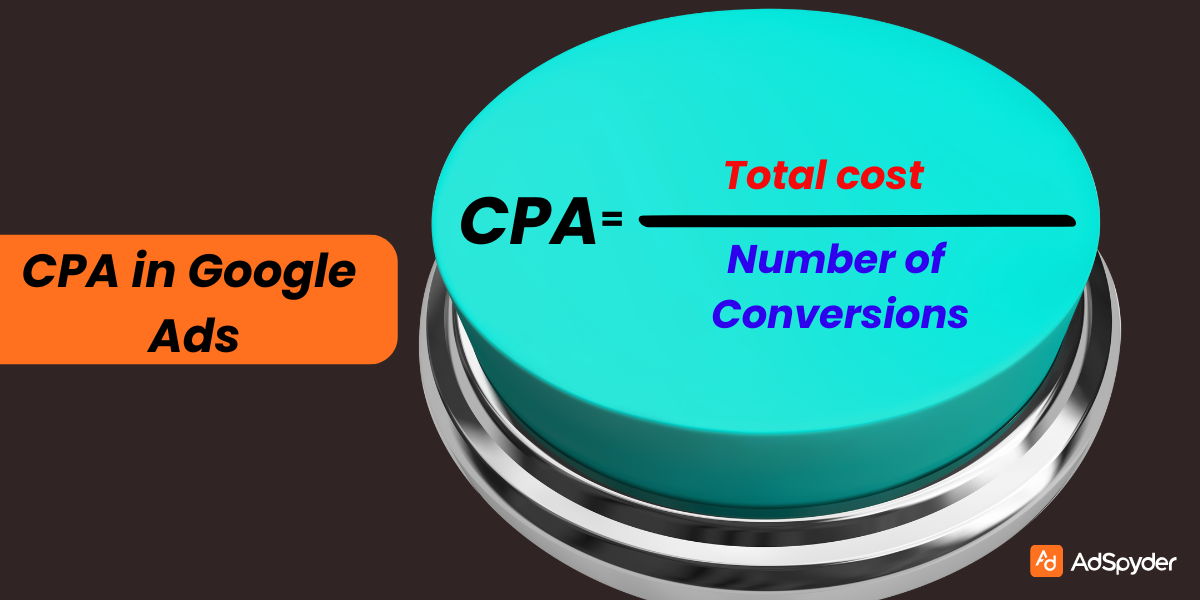
Cost Per Acquisition, or CPA, tells you how much you spend to get a new customer through Google Ads. It’s key for figuring out if your advertising efforts are paying off.
What CPA Tells You About Your Campaign
- CPA, or cost per acquisition, measures how much you spend to get a new customer through your Google Ads campaign. It tells if your advertising is effective. A low CPA means your strategy works well and costs less to gain customers.
- On the other hand, a high CPA signals it’s time to check your ad relevance, targeting, and keywords. This way, you can adjust for better results without wasting money.
- To keep CPA in check, focus on improving your ad quality and choosing the right negative keywords. These steps help lower unnecessary spending by avoiding uninterested clicks. Regularly tracking CPA alongside other metrics like click-through rates gives a clear view of where to fine-tune efforts for more efficient spending and higher returns from online ads campaigns.
Techniques to Optimize CPA for Better Results
After understanding what CPA can tell us about our smart Google ad campaigns, it’s crucial to take steps towards optimising it for better outcomes. One effective method is refining the audience targeting options.
- By focusing on demographics and interests that closely match your ideal customer profile, you reduce wasted spend and increase the likelihood of conversions.
- Keyword research plays a pivotal role here; selecting high-intent keywords ensures ads appear to users who are more likely to convert.
- Improving the ad’s landing page also significantly lowers CPA. Ensuring that the web page visitors land on is user-friendly, fast-loading, and relevant to their search query boosts conversion rates.
- Employing A/B testing to experiment with different elements of your ad—like headlines or call-to-actions—helps identify which versions yield the best performance metrics. Combining these strategies effectively reduces cost per acquisition, making your marketing budget work harder and smarter for you.
Return on Ad Spend (ROAS): Measuring Profitability

ROAS tells you how much money you make for every dollar spent on ads. It helps businesses see if their ad investments are paying off.
Calculating and Interpreting ROAS in Optimising Google Ad Campaigns
- Calculating ROAS, or return on ad spend, is simple. First, divide your ad earnings by the cost of those ads. This gives you a ratio showing how much money you make for every dollar spent on Google Ads.
- A higher ratio means more profit from your investment in online commercials. It’s crucial to track this metric over time to see if your paid search strategies are working well.
- Interpreting ROAS involves understanding its impact on business success. A good ROAS depends on industry standards and financial goals. For instance, a 4:1 ratio might be great for some businesses but not enough for others with higher operating costs.
- To improve ROAS, focus on enhancing ad relevance and landing page quality—factors that can lead to better conversion rates and lower cost per click (CPC). Next up, let’s look into quality scores and their importance in paid advertising campaigns.
Strategies to Improve ROAS and Achieve Break-Even
- To boost your ROAS, start by refining your target audience. Use data to understand who interacts with your ads and converts. This makes each dollar spent more effective. Also, test different ad creatives to see which ones engage your audience the most.
- Simple changes in images or wording can lead to better performance. Advertisers need to keep an eye on Google Ad Campaign metrics for ROAS to maximise campaign performance.
- Next, focus on optimising bidding strategies for cost-efficiency. Leveraging automated bidding options like Google Ads’ smart bidding can help adjust bids in real-time, maximizing ROI.
- Keep an eye on quality score too—a higher score means lower costs per click and better ad positioning without spending more.
- Lastly, don’t forget about mobile users. Make sure ads are optimized for smartphones to capture this growing segment effectively.
Quality Score: A Reflection of Relevance and Quality
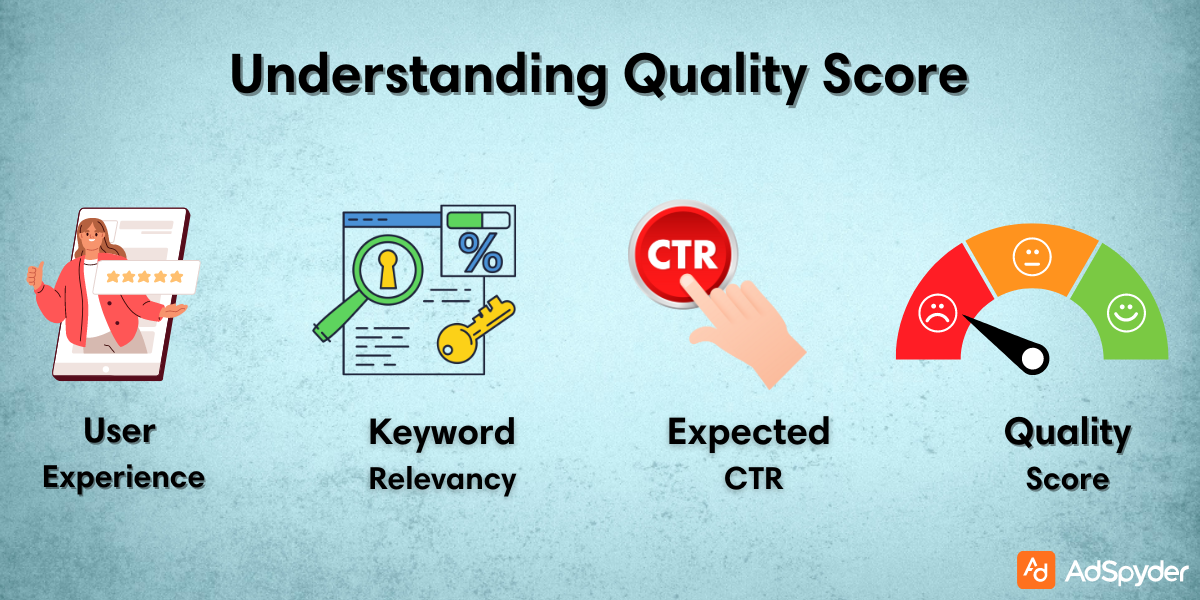
Quality Score acts like a report card for your Google Ads, grading them on relevance and quality. To boost this score, focus on improving ad relevance, landing page experience, and expected clickthrough rate—key factors that influence it.
Components of Quality Score in PPC
- A Quality Score in PPC reflects how relevant and helpful your ads, keywords, and landing pages are to those who see your ads. Google looks at how well your ad matches someone’s search, the click-through rate (CTR), and the quality of your landing page.
- High scores mean lower costs per click (CPC) and better ad positions.
- Three main parts make up this score: expected CTR, ad relevance, and landing page experience. Expected CTR estimates how likely it is that someone will click on your ad when shown for a specific keyword.
- Ad relevance checks if your ad fits what people are searching for. Lastly, landing page experience assesses how useful and easy-to-navigate your website is once people click on your ad.
- Improving these areas can lead to higher scores, making campaigns more effective and efficient.
Best Practices for Improving Quality Score
- To boost Quality Score, focus on enhancing the relevance of your ads and landing pages. Use keywords effectively in your ad text to match user searches. This strategy ensures that Google sees your ads as pertinent to search queries.
- Regularly update content on landing pages to reflect current promotions or products, making them more useful for visitors.
- Create tightly themed ad groups for tighter targeting. This approach helps in delivering more specific messages to different segments of your audience.
- Experiment with different versions of ad copy by A/B testing to find what resonates best with potential customers.
- Pay attention to load times; fast-loading landing pages provide a better user experience, which Google rewards with higher rankings.
- Keep monitoring and adjusting bids based on performance data from analytics platforms like Google Ads Dashboard, focusing on cost-per-click (CPC) and conversion rates as main indicators of success.
Impression Share: Understanding Market Reach
Impression Share tells you how often your ads show up in searches. It gives a clear view of your ad’s visibility compared to others.
The Significance of Impression Share in Google Ad Campaign Metrics
- Impression share in Google Ads shows how often ads get seen. Think of it as your ad’s visibility compared to all possible times it could show up. If your ad appears 50 out of 100 times people search, your impression share is 50%.
- A high number means you’re covering a lot of ground; you’re reaching many eyes. But if it’s low, others are taking the spotlight, and there’s room for improvement.
- Boosting this metric can push your ad campaigns ahead. You need smart bidding tactics and strong keywords – the backbone of any campaign.
- More than just increasing views, improving impression share enhances brand awareness and opens doors to more clicks and conversions.
- This goes hand-in-hand with refining other metrics like click-through rates (CTR) and cost per action (CPA), making sure every dollar spent works harder for you.
Tactics to Increase Your Impression Share
- To bridge the gap between understanding impression share’s importance and enhancing it, consider these tactics. Boosting your ad’s visibility in search results is key for a larger market reach.
- Start by refining your keyword strategy. Pick words closely linked to what users seek online—this ensures your ads show up more often where it matters. Also, improve ad quality with compelling copy and eye-catching design because Google rewards ads that people find relevant.
- Another method involves adjusting bids for better placement in search results pages. Consider automated bidding strategies; they adjust your bids in real-time, aiming to put your ad at the top of the page without overspending.
- Pay attention to landing pages too—make sure they’re related closely to the ad content for a smooth user journey from click to conversion. This way, you not only increase impressions but also enhance overall campaign performance.
Check this out: How to gain more customers using LinkedIn ads
Google PPC Conversion Rates: Turning Clicks into Conversions
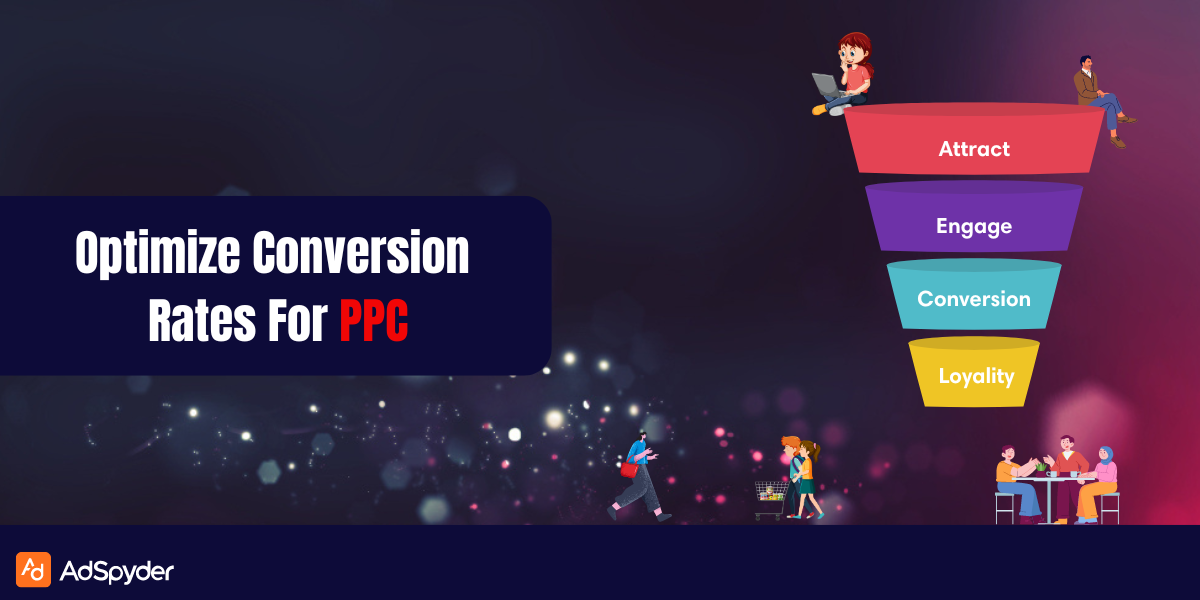
Google PPC conversion rates show how often clicks turn into actions. Understanding these metrics helps make optimising Google Ad Campaigns more effective.
Analyzing Conversion Rates in Different Contexts
- Conversion rates change depending on many factors. Each industry faces unique challenges and opportunities, affecting how often clicks turn into sales or leads. For instance, e-commerce websites might see different conversion patterns than service-based platforms. Google App ad campaigns have different conversion criteria than normal ad campaigns.
- Understanding these nuances helps adjust strategies for better outcomes.
- Looking at data from various angles also sheds light on performance trends over time. Seasonal shifts can impact buyer behavior—like higher sales during holidays for retail businesses.
- Analyzing such patterns requires comparing current figures against historical data to identify improvement areas or predict future performance accurately. This approach ensures ad campaigns stay aligned with overall business goals and market dynamics.
Benchmarking Conversion Rates by Industry
- Every industry has its own average for how often visitors do something desired after clicking an ad, like buying a product. This measure lets companies see where they stand against others in their field.
- For example, e-commerce sites might aim for a higher rate because their success directly links to online sales, while B2B services may have lower expectations due to longer sales cycles.
- Checking these benchmarks helps businesses set realistic goals and refine their online advertising strategies. It shows them where there’s room for improvement or if they’re leading the pack.
- With industries ranging from fashion retail to software as a service (SaaS), understanding these rates is crucial for any company using web ads to attract customers.
Check out: Seven Essential Practices for Google App Ad Campaigns with Effective Examples
Conversion Rate Optimization for Google Ads
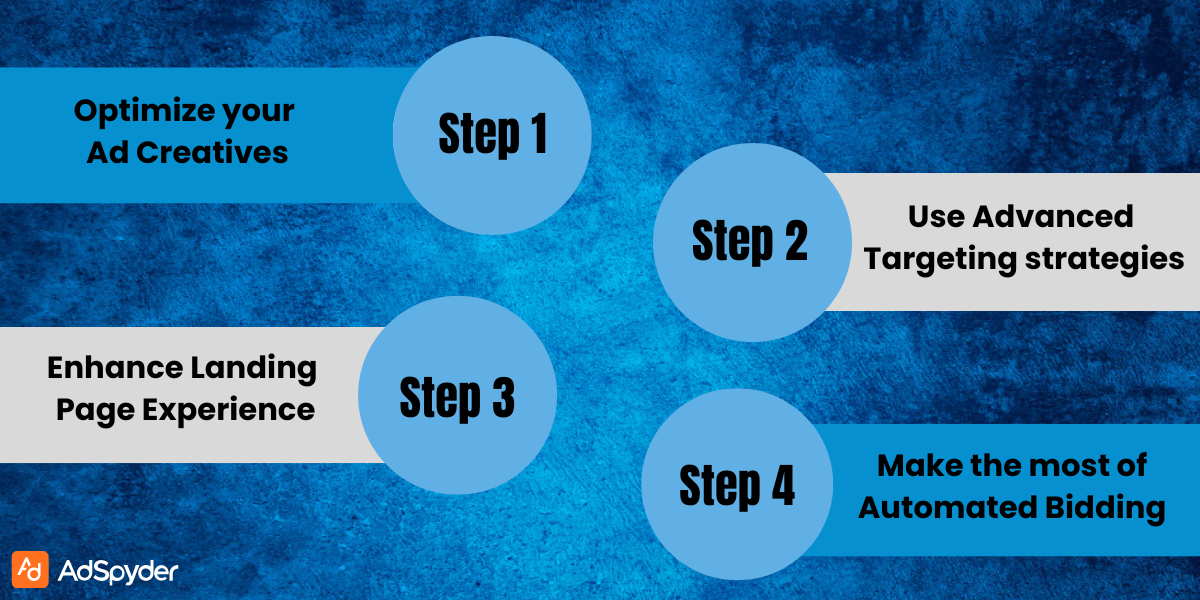
Conversion Rate Optimization, or CRO, turns visitors into buyers. It uses A/B testing and feedback to boost sales from clicks.
Techniques for Enhancing Conversion Rates
- Improving conversion rates starts with A/B testing. This method lets you compare different versions of your ads to see which one performs better. Use feedback from users to make your ads more appealing.
- Simple changes, such as tweaking the ad copy or adjusting images, can lead to better performance. Another key tactic is segmenting your audience. By targeting specific groups, you can tailor your message and connect on a more personal level.
- Optimising landing pages also plays a critical role in lifting conversion rates. Ensure these pages are clear, fast-loading, and mobile-friendly to keep potential customers engaged.
- Incorporating strong call-to-actions that prompt immediate responses helps too. Lastly, using analytics tools gives insights into what works and what doesn’t, allowing for informed adjustments moving forward.
Utilizing A/B Testing and User Feedback
- A/B testing and user feedback play crucial roles in boosting Google Ads performance. Start by running two versions of your ad campaign to see which performs better. This method helps identify the most effective elements, from headlines to call-to-actions.
- Listen closely to what users say about their experiences. Their insights can guide improvements and tweak ads for higher engagement.
- Use tools like surveys and comment sections to gather user feedback. Combine these findings with A/B test results for a powerful strategy. Adjust campaigns based on relevant Google Ad Campaign metrics and real opinions, not just guesses.
- This approach makes sure your ads resonate more with your target audience, leading to better conversion rates and ROI.
Key Performance Indicators (KPIs) for Optimising Google Ad Campaigns
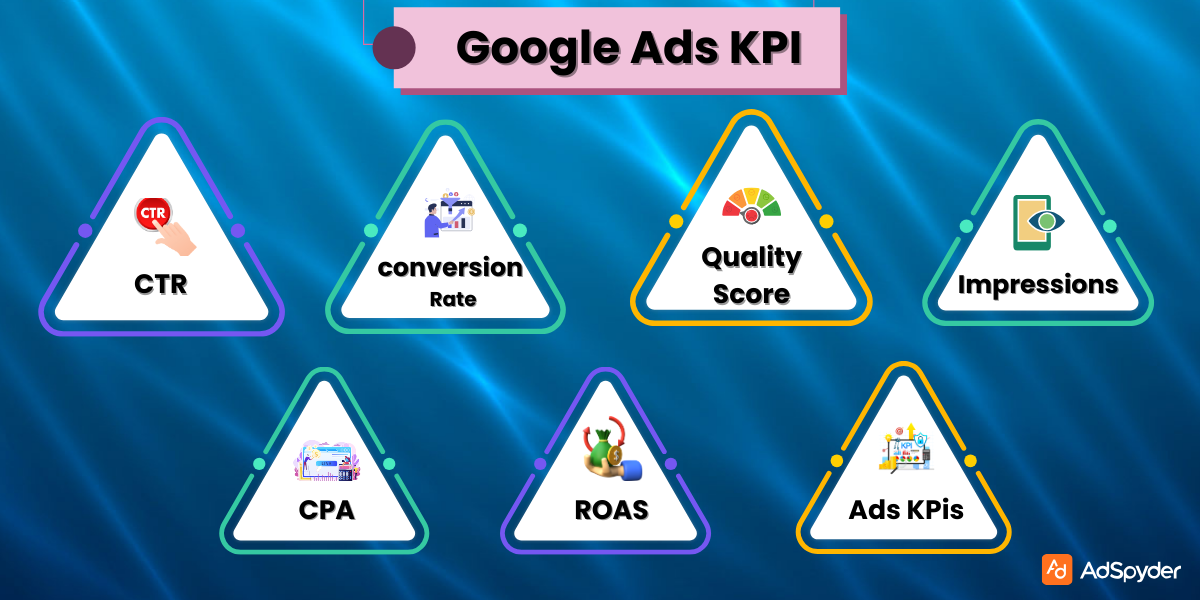
Key Performance Indicators, or KPIs, guide success in Google Ads. They align with business goals and show how well campaigns perform.
Identifying and Setting the Right KPIs for Optimising Google Ad Campaigns
- Selecting the right KPIs is crucial for understanding your Google Ads campaigns’ success. You must align these indicators with your business goals and campaign objectives. Common KPIs include cost per conversion, return on investment (ROI), and click-through rate (CTR).
- Each serves a clear purpose. Cost per acquisition offers insights into the money spent to gain a customer. ROI measures profitability from your ads. CTR shows user engagement by counting how often people click on your ad.
- To set effective KPIs, first, define what success looks like for your marketing efforts. This could mean focusing on getting more website traffic, increasing sales, or boosting brand awareness.
- Use tools like dashboards to track these metrics over time closely. This helps in making informed decisions and adjustments to improve performance continuously.
- Aligning KPIs with specific targets ensures every dollar spent contributes towards achieving broader marketing objectives effectively.
Aligning KPIs with Business Objectives and Campaign Goals
- Setting the right KPIs is key for the success of Google Ads campaigns. These indicators should match your business goals like boosting sales, increasing website traffic, or improving brand awareness.
- Use tools like CPC (cost per click) and CPA (cost per acquisition) to measure how well your ads are performing. Aligning these with what you aim to achieve ensures your efforts lead directly to business growth.
- Understanding how each campaign moves you closer to your objectives makes decision-making clearer.
- For instance, if ROAS (return on ad spend) is a main goal, focusing on strategies that enhance this metric will draw more profit from each dollar spent on ads.
- This approach keeps all actions aimed at a common target—maximizing return while efficiently managing resources.
Future-Proofing for Optimising Google Ad Campaigns
Staying ahead in Google Ads means keeping an eye on new trends and updates. Preparing for changes helps your campaigns stay strong, no matter what the future holds.
Keeping Up with Emerging Trends in Google Ads
- Google Ads constantly evolves, introducing new features and algorithms. Marketers need to stay alert to these changes to keep their campaigns effective. Tools like machine learning and automation are becoming crucial in managing ad bids and targeting more efficiently.
- These tools help in predicting trends, understanding customer behavior, and optimising ad spend for better ROI.
- To adapt, businesses must focus on emerging trends such as video advertisements on social media platforms and the increasing importance of mobile ads. Voice search is also gaining traction, requiring adjustments in keyword strategies to match conversational queries.
- Keeping pace with these trends ensures that campaigns remain competitive and continue to engage the target audience effectively.
Preparing for Changes in Industry Benchmarks and Standards
- Keeping up with emerging trends in Google Ads is crucial, but it’s just as important to prepare for shifts in industry benchmarks and standards. These changes can impact how we measure Google Ad Campaign metrics in our ad campaigns.
- Advertisers must stay alert and adapt quickly. They should watch for updates from official sources like Google’s blogs or industry forums. This keeps them ahead of the game.
- Firms need a plan to adjust their strategies when new guidelines roll out. Regular training sessions on the latest best practices for optimising Google Ad Campaigns via metrics tracking can help teams pivot without losing momentum. Using tools like SEO content analyzers or social media marketing platforms helps understand these shifts better.
- Staying flexible ensures that your campaigns remain effective, even as the landscape evolves.
Conclusion
Optimising Google Ad Campaigns is vital for success. Tracking metrics like click-throughs, cost per acquisition, and return on ad spend shows where you can improve. These numbers help figure out if you’re reaching the right people and making money from your ads. It’s key to keep an eye on quality score and how often your ads get seen too. With smart tweaks based on data, you’ll see better results—more clicks, higher sales, and a stronger online presence.
